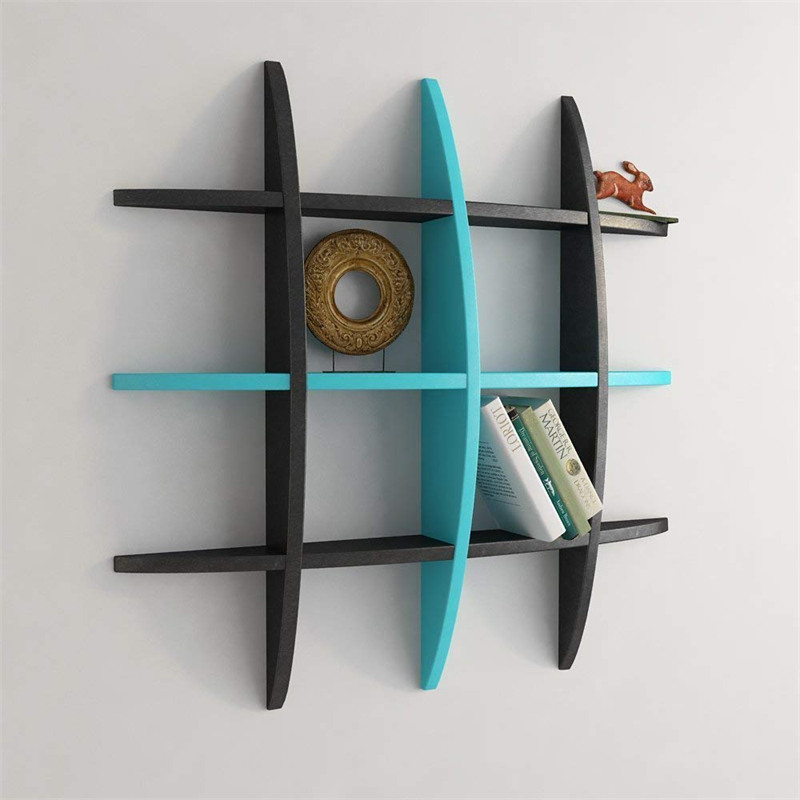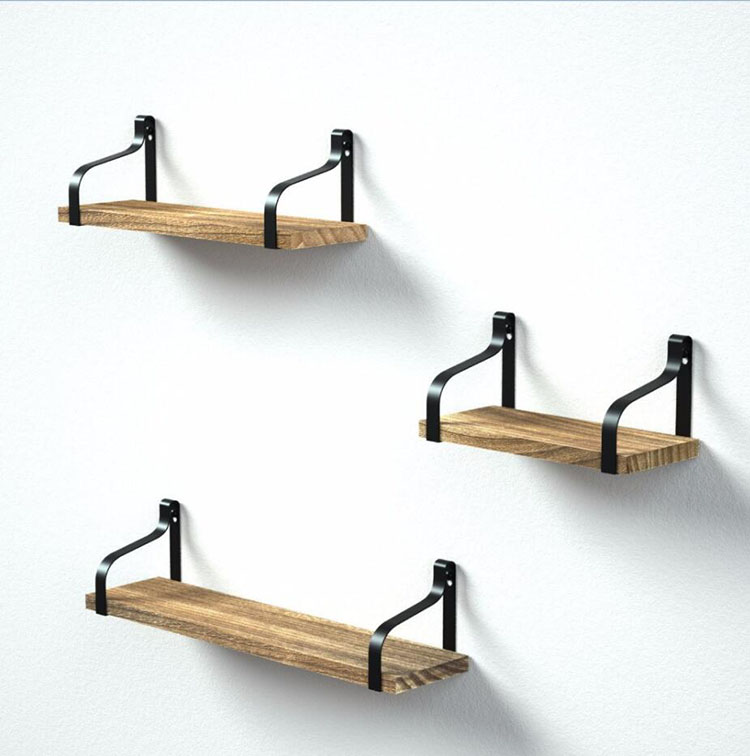Outstanding FM screening quality
A floating shelf is a form of shelf with its wall fixings hidden within the shelf board, with no visible supporting brackets. It can be supported on hidden rods or bars that have been attached to studs. A thick floating shelf may be made of a hollow-core shelf glued to a cleat. Wall Mounting Shelf,Wall Mount Corner Shelf,Wall Mounted Floating Shelf,Wall Mounted Shelf,Wall Mount Shelves Set,Floating Corner Shelves,Rustic Decorative Shelves,Wall Corner Shelves Jinan Tri-Tiger Technology Development Co., Ltd , https://www.jinanfurniture.com
AM screening technology is quite mature, and we are also accustomed to using AM screening. Although the amplitude modulation screening is good, the following problems will still arise:
Loss of details: Because the distance between the dots is fixed, the middle blank area will cause the loss of the details of the image.
◠Grid collision brings moiré: The grid shape of the original document conflicts with the mesh shape of the amplitude modulation net points, causing interference phenomena and moiré.
◠There are moiré patterns on the screen: the colors are different, and the shape of the screen is not the same. When they are overlapped, interference will occur and a moiré will appear.
â— Rose spots: Due to the different angles of the screening of the four colors, when the colors are copied, small rose spots usually appear. If rose spots appear in areas of important tones, or if they are caused by inaccurate overprinting of certain colors, then the quality of prints will be greatly affected.
â— Visual collision: In the process of tune-up, with the enlargement of the amplitude-increasing screen dots, eventually the dots will be in contact with each other, then it should be a gradual change but suddenly become a black tone.
More realistic FM screening quality Now publishers and printers have started using random screening, which is FM screening. This kind of screening can solve the above problems well. FM screening does not follow fixed screening angles and meshes. The mesh size is the same, but the number is not equal, which means it appears randomly. This type of screen has no direction and there is no screen angle. The variable distance between outlets means that there is no fixed distance and there is no network line (lpi). In terms of detail rendering, FM screening is expressed in micron-sized dot sizes. For example, the 21-micron FM screening exhibits 400 lpi of detail.
Because FM screening does not have halftone screens and screen angles, there are no rose patches and no common defects in AM screening.
Loss of details: The loss of details is greatly reduced. Because the frequency of the FM screening network is small, and the distance between the network points can be changed to express the details.
◠Grid conflict brings moiré: Due to the lack of a fixed direction in FM screening, we can avoid the occurrence of moiré caused by grid conflicts.
◠Moiré appears on the screen: Since the FM screen has no fixed direction and the distance between the screens is indefinite, the moire is avoided.
â— Rose spot: FM screening has eliminated the structure of the rose spot from its roots. â— Visual collision: better results are achieved with gradual changes, and the phenomenon of collision is reduced.
FM screening is now widely used Although FM screening technology appeared in 1980, there are not many printers. The main reason is that it is more difficult and inconsistent for FM networks to image on plates. As long as any changes occur in the traditional platemaking process, it will affect the final tuning of FM screening and reduce the reliability of screening.
With the gradual promotion of computer direct plate-making and flexible and stable digital proofing technology, the variable factors affecting FM screening are greatly reduced, and FM screening has been put into practical use. This technology is now used in sheetfed and rotary printing, packaging and printing, magazine printing, and direct mail printing.
Their experience shows that with FM screening, offset quality is higher:
◠Color rendering range: The dots of the FM screening are small and can generally reach 21-25 μm in single-sheet rotary printing, making the use of ink and color reflectance better than 133-200 lpi for AM screening. This will also make the middle tone brighter, and it will also effectively reduce the color pollution from the paper.
◠Printing Product Stability: Typical FM screening screen sizes are 21-25 μm, and most ink films in the toner range are relatively thin. In general, the number of screening screens for the amplitude modulation screening is 150-200 lpi, and the mechanical network point expansion is much larger than that of the FM network points. Most of the added tonal values ​​in the FM screening are visual, not mechanical, so the changes caused by the ink and paper properties in the printing are much smaller than those of the AM screening. In addition, the finer dots of FM screening increase the distribution of ink evenly, which greatly reduces the mechanical accumulation of ink in the screen dot adjustment points. This will make the tone larger and the color more stable.
â— The ink dries faster: the ink film is thin, and the ink mechanical accumulation of the halftone dot is reduced, which means that the drying speed of the FM screening dot is faster than that of the conventional screening. This is significant for double-sided printing: no waiting for drying The corresponding reduction in working hours, and the more uniform time for binding, and the creation of conditions for the use of FM screening on a variety of substrates.
â— Visual stability: When the AM screening is inaccurate, the visual mesh structure will change. FM screening will not change whether or not the edition is inaccurate. Printing workers also found that FM screening was a better representation of the details of the printed product than the AM screening when the version was inaccurate.
â— Color stability: In the amplitude modulation screening, if the version is inaccurate, or if the rotary roller is slightly offset, the hue and color will be shifted. FM screening does not have these problems.
However, FM screening is just like other innovations in printing technology. To successfully apply it, it is necessary to upgrade software and hardware, as well as related training and testing. The most important thing is to establish a production control system. In this system, not only the prepress and printing employees must work closely, but also the printers and raw material suppliers should collaborate to ensure that the desired results are achieved.
It should be noted that FM screening may never completely replace traditional AM screening. Since AM screening has been used on offset printing for a long time, the technology is mature, and some specific printing effects can be well performed, it will remain the mainstream of screening in the coming years.

A floating shelf may have two or more channels open from the back towards, but without reaching, the front, into which slide fasteners attached to the wall, typically held in place by screws inserted through the bottom of the shelf.
For typical floating shelf supports, a supplier suggests that floating brackets with a diameter of 12mm can support a shelf at least 22mm thick loaded with 20kg, and 18mm brackets can support 30kg on a 28mm shelf.

This description is in reference to one particular type of floating shelf support, others options are available. Also not to be confused with corner shelves, which would require entirely different supports to make them "float".
Floating shelves are a good fit for a contemporary minimalist style interior.They can be used to expand storage space, atop a radiator to double as storage, or inside a hallway to double as a console table.
